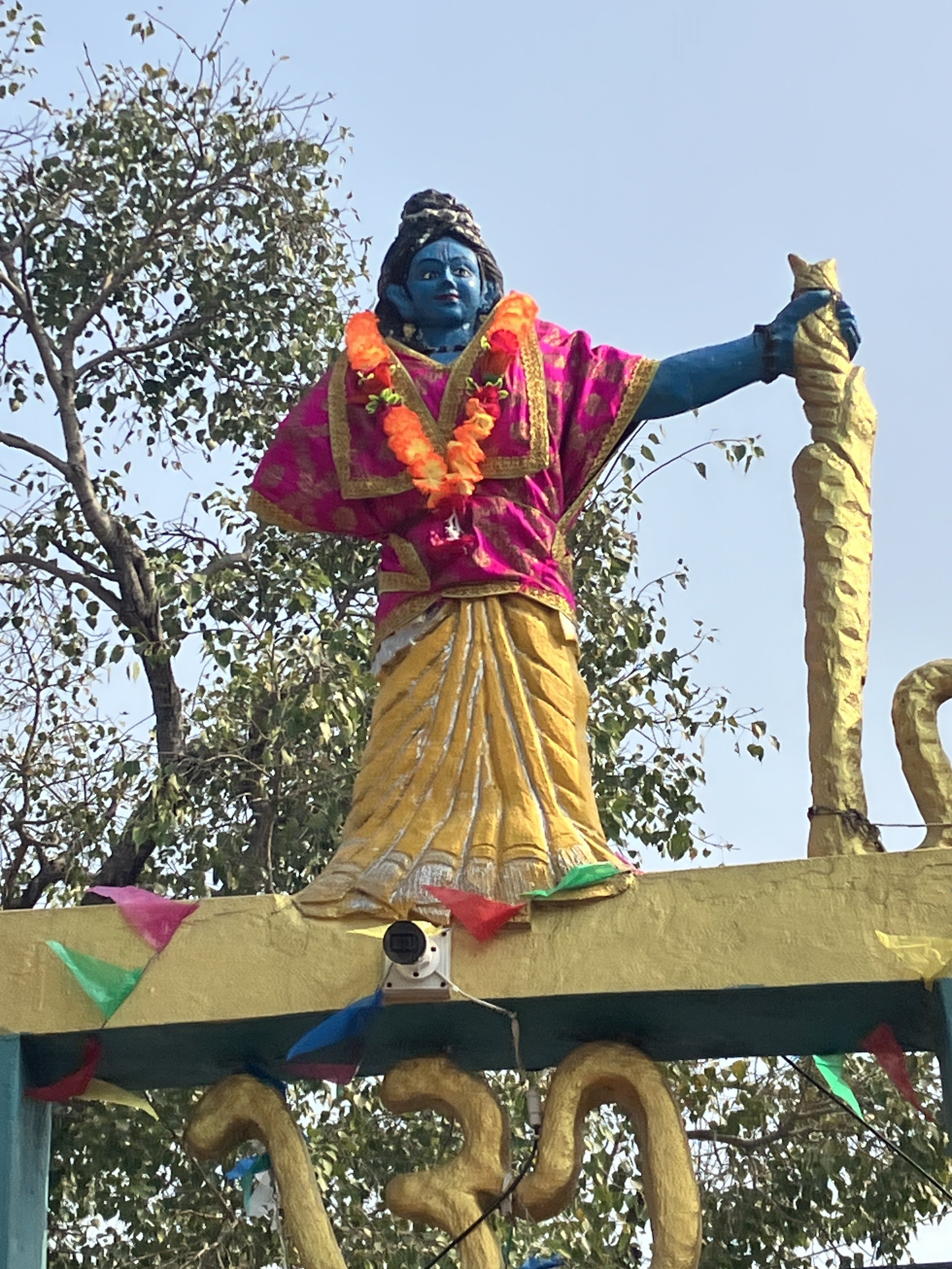Komal Sahi is a PhD scholar in Sociology at Jamia Millia Islamia university. Her research interests are urban sociology and neo religiosity vis-a-vis space. Based in Delhi, she is currently working on urban spaces through the lens of everyday mundane narratives and realities.
Pakkhee is an illustrator and artist, draws inspiration from her heritage, exploring identity, culture, and folklore. Her work blends themes of land, language, nature, and technology. As art director at Lahooti, she bridges indigenous and modern cultures through storytelling and creative expression.
Saahil Shokeen is a PhD research scholar in Sociology at Dr. B.R. Ambedkar University, Delhi, he hails from New Delhi. His research interest are sociology of religion , pilgrimage performativity and visual documentation. He is currently documenting and researching kawad yatra, an annual Shiva pilgrimage.
In the heart of Janakpur, a city known for its vibrant art and deep spiritual roots, the Cultural Village stands as a testament to the resilience and creativity of the Madhesi people. Conceived by conservationist Dev Narayan Mandal, this space is a living, breathing archive of traditions, craftsmanship, and community life. This essay explores how the village embodies placemaking, sustainability, and the rich heritage of Mithila culture.
The cultural village. Photo courtesy of the authors.
Designed to replicate a traditional Maithili settlement, the place showcases stunning Mithila murals, clay-mud houses, and organic farming practices. Every aspect of the village embodies a commitment to heritage conservation, providing an authentic experience for visitors. It is more than a static exhibit—it is a space for interaction and cultural exchange. Local artisans, particularly women, actively preserve and promote Mithila art. Their murals, rich with folklore and social narratives, adorn the village, creating a dynamic connection between tradition and modernity.
A room at the cultural village. Photo courtesy of the authors.
A meal at the cultural village. Photo courtesy of the authors.
Guests can stay in traditionally styled thatched-roof mud houses adorned with Mithila paintings, dine on authentic Maithili cuisine prepared with locally grown ingredients, and engage with artisans and farmers. The slow-paced, immersive experience fosters a deeper appreciation for cultural and environmental sustainability.
Farming at the cultural village. Photo courtesy of the authors.
Beyond tourism, the village empowers local communities by providing employment and education opportunities. It fosters cultural pride and economic sustainability, reinforcing the importance of preserving heritage in a rapidly modernizing world. The Cultural Village in Janakpur is a remarkable example of placemaking, where tradition and sustainability converge. It stands as a model for heritage conservation, demonstrating how culture, ecology, and community can harmoniously coexist.
The Cultural Village in Janakpur is not just a space—it is an evolving narrative of resilience, creativity, and sustainability. In our fast-paced lives, how can we ensure that such cultural enclaves continue to thrive? Perhaps the answer lies in actively engaging with these traditions, supporting local artisans, and rethinking heritage as a shared responsibility.
To bring this experience to life, The Cultural Village in Janakpur is documented through a photo essay that captures its vibrant traditions, artistic expressions, and everyday life. This project explores the visual journey of how heritage, sustainability, and community engagement shape this unique cultural space.












